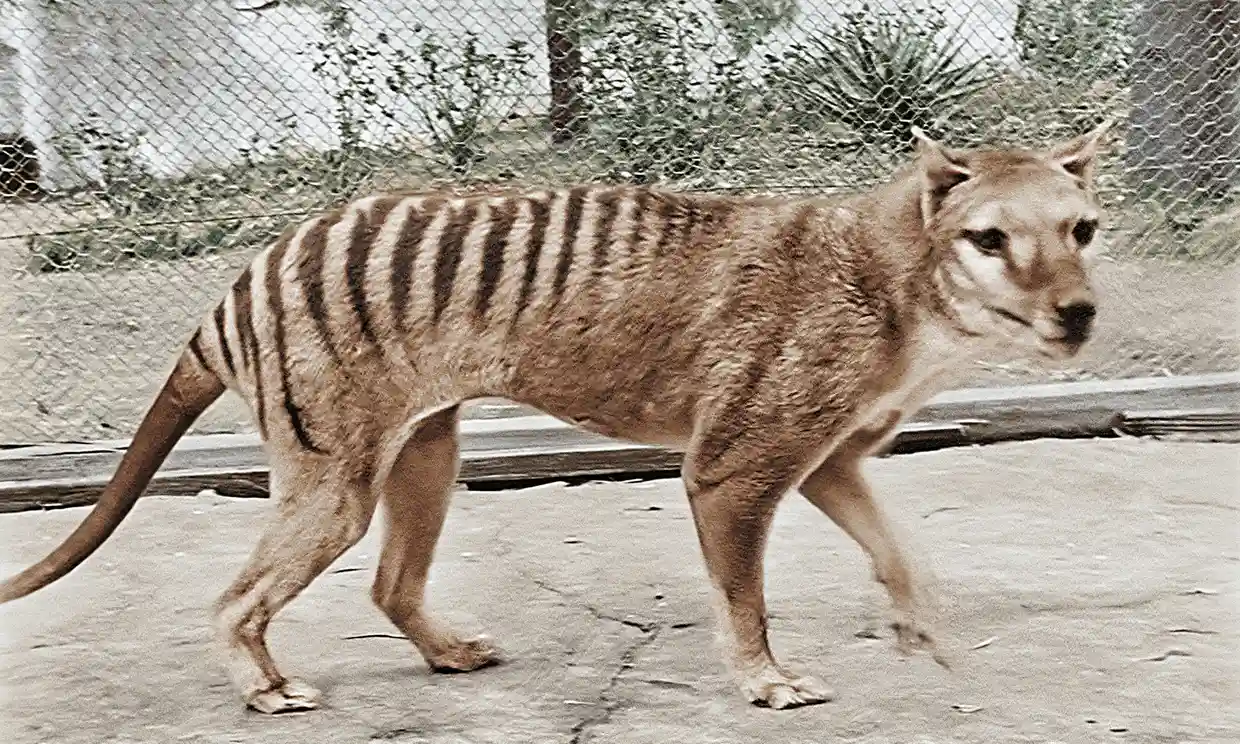De-extinction Company to Work on Resurrecting Tasmanian Tiger
On Tues., Texas-based de-extinction company Colossal Biosciences announced they will attempt to resurrect the thylacine, or the Tasmanian Tiger - Australia's only marsupial apex predator.

Facts
- On Tues., Texas-based de-extinction company Colossal Biosciences announced they will attempt to resurrect the thylacine, or the Tasmanian Tiger - Australia's only marsupial apex predator.
- De-extinction is an initiative designed to create new versions of lost species. Since 1999, Australian scientists have hoped to bring back what was once the country's top predator. If the thylacine is resurrected the hope is that it would help restore balance to the ecosystem.
- The company, which is also attempting to restore the wooly mammoth, will be working alongside the Thylacine Integrated Genetic Restoration Research Lab at the University of Melbourne.
- The Australian Museum attributes the thylacine's extinction on the mainland over 2k years ago to human hunting and competition with the dingo. The animals continued to thrive on the Australian island of Tasmania until the last known thylacine died in 1936. The species were declared extinct in 1982.
- Scientists plan to use stem cells from living animals with similar DNA and fabricate them into thylacine cells or a close approximation. They will then use marsupial-specific assisted reproductive technologies to create an embryo that will be implanted into an artificial womb or surrogate.
- If successful, the animals will resemble their predecessors and will likely provide the same benefits to the ecosystem but they won't be exact clones of the thylacine.
Sources: Scientific American, Vice, Newsweek, and Guardian.
Narratives
- Narrative A, as provided by Discovery. Losing an apex predator as Australia did almost a century ago has far-reaching environmental repercussions, such as the spreading of disease, invasive species, and a disruption to natural biogeochemical cycles. The resurrection of the Tasmanian Tiger will re-balance the ecosystem and advance research for the conservation community. This is excellent work.
- Narrative B, as provided by Newsweek. While, in theory, this is exciting research, there's a lack of consideration for the many technical, ethical, and ecological challenges, such as the welfare of the animals, which would be subjected to a life in captivity before an uncertain reintroduction into the wild. The money would be better spent on preventing the extinction of existing animals.






